Investigate the enigmatic figure of Kedar in the Bible, and uncover the profound legacy that intertwines with ancient prophecies and history.

Kedar in the Bible
You've likely come across various names in the Bible, but have you paused to consider Kedar? As a second son of Ishmael, his lineage isn't just a mere footnote; it weaves through ancient narratives and prophecies, hinting at a legacy that extends far beyond a simple genealogical mention.
From mentions in Genesis to intriguing prophecies in Isaiah, Kedar's role and the land associated with his descendants beckon for a closer look. Why do scholars and theologians invest time in unraveling the mysteries surrounding Kedar, and what could his story possibly reveal about the broader historical and spiritual context of the time?
This invites a deeper exploration into a figure that might otherwise be overlooked, shedding light on the intricate tapestry of biblical history and prophecy.
Key Takeaways
- Kedar is identified as Ishmael's second son, emphasizing his nomadic heritage and cultural significance.
- Descendants of Kedar played a crucial role in the continuation of Ishmael's lineage and nomadic pastoral economy.
- Biblical narratives and prophecies involving Kedar reflect themes of doom, accountability, and a lasting legacy within spiritual contexts.
- Archaeological insights into Kedar's community reveal the economic and cultural impacts of trade and nomadic lifestyle in the ancient Near East.
The Lineage of Kedar
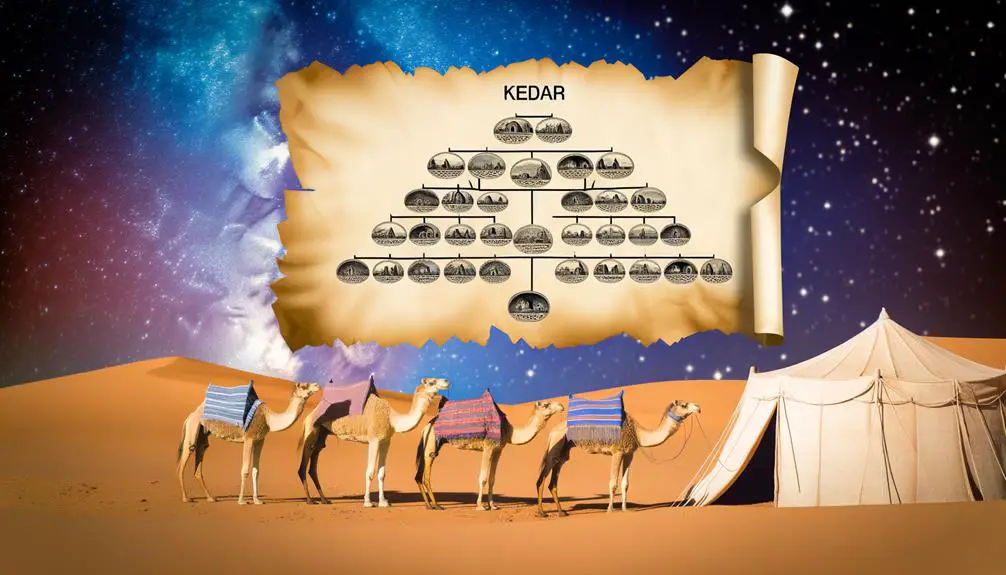
Tracing back through generations, Kedar emerges as a significant figure in biblical genealogy, being the second son of Ishmael, as meticulously documented in ancient scriptures. This connection places him squarely within the Ishmaelite lineage, a detail of paramount importance when considering the broader historical and theological implications of his descendants, known collectively as Kedar's tribes.
Kedar's tribes are often associated with a nomadic lifestyle, roaming the deserts of the Arabian Peninsula. This isn't just a cultural footnote; it's a testament to their resilience and adaptability, traits that you'd find deeply ingrained in the Ishmaelite lineage. The significance of Kedar within the biblical narrative isn't merely a matter of lineage; it's also reflective of the socio-political and economic landscape of the time. His tribes are frequently mentioned in ancient texts, highlighting their prominence in trade routes and as formidable entities in regional conflicts.
Analyzing the references to Kedar's tribes in ancient scriptures provides a fascinating glimpse into the interconnectedness of tribal societies in the Near East. It's clear that their influence extended beyond mere lineage; they were integral to the fabric of the region, embodying the spirit of the Ishmaelite lineage through their actions and interactions.
Kedar in Genesis
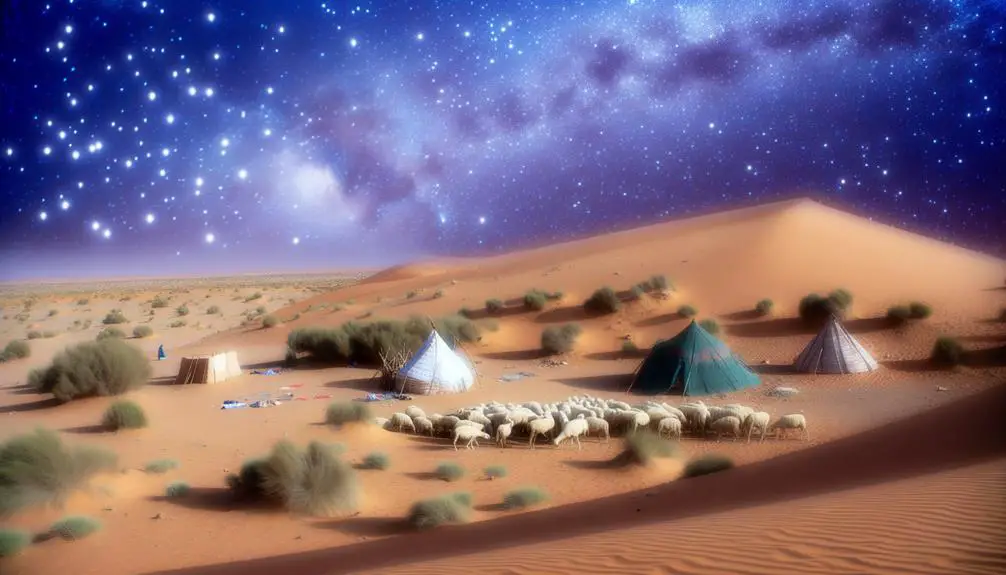
You'll find that Kedar's genealogical position in Genesis provides a vital link to understanding the broader narrative of the descendants' roles in biblical history.
His lineage, as depicted, isn't merely a listing; it's a foundation for exploring the significance of Kedar's descendants within the tapestry of biblical events.
This analysis reveals how these relationships underscore the complexity and depth of character interactions and developments throughout the scriptures.
Kedar's Genealogical Position
Kedar emerges as a significant figure in Genesis, identified as the second son of Ishmael, thereby positioning him within a pivotal genealogical framework in biblical narratives. His placement not only underscores his role within Ishmael's lineage but also highlights the broader context of his descendants' nomadic lifestyle, which is intricately linked to the broader historical and cultural fabric of the region.
- Genealogical Significance: Kedar's position as Ishmael's second son.
- Cultural Implications: Reflects the nomadic lifestyle of his lineage.
- Siblings' Role: Provides context to Kedar's interactions and standing.
- Historical Context: Anchors Kedar within a specific socio-cultural milieu.
Through this genealogical lens, you grasp the depth and complexity of Kedar's narrative, appreciating his integral role in biblical history and the larger story of his people.
Kedar's Descendants' Significance
Delving into the biblical narrative, it's evident that the descendants of Kedar play a pivotal role in illustrating the continuation and expansion of Ishmael's lineage, shedding light on the broader sociocultural dynamics of the time. They're not just a footnote in history; their existence and activities provide invaluable insights into the cultural practices and trade routes of the ancient Near East.
Prophecies Involving Kedar

You'll find that the biblical prophecies concerning Kedar are multifaceted, predicting both doom and a lasting legacy. These predictions aren't merely historical footnotes; they provide deep insights into the theological and geopolitical dynamics of the era.
Analyzing them, you uncover a complex interplay of judgment and preservation that has influenced interpretations of Kedar's role in biblical narratives.
Kedar's Doom Predicted
How did ancient prophecies foretell the fate of Kedar, marking its doom with startling precision and detail? These desert prophecies, deeply entwined with the nomadic lifestyle of Kedar's people, offer a rich tapestry of predictive insights. Their doom wasn't a vague foretelling but was anchored in specific, stark outcomes.
- Desert prophecies highlighted the eventual desolation of lands once teeming with life and commerce.
- The nomadic lifestyle of Kedar's people, synonymous with freedom and mobility, was foreseen to face abrupt disruption.
- Military conquests were predicted, leading to a scattering of the Kedarites.
- Economic decline was foretold as trade routes shifted or were destroyed, undermining Kedar's prosperity.
These elements combined to paint a detailed picture of Kedar's decline, demonstrating the prophetic accuracy of ancient texts.
Kedar's Legacy Foretold
While ancient prophecies spelled out Kedar's doom with startling precision, they also shed light on the enduring legacy this community would leave behind, marking a complex tapestry of influence and memory that has woven itself into the fabric of history.
Aspect |
Influence |
|---|---|
Nomadic Traditions |
The lifestyle and practices of Kedar have influenced modern nomadic cultures, emphasizing resilience and adaptability. |
Cultural Influences |
Kedar's artistic and linguistic contributions have seeped into the cultural bedrock of Near Eastern societies, enriching them. |
Prophecies |
Predictions about Kedar have inspired interpretations and teachings in religious studies, highlighting the community's historical significance. |
Legacy |
The enduring narratives surrounding Kedar serve as a testament to their impact on historical narratives and collective memory. |
The Land of Kedar
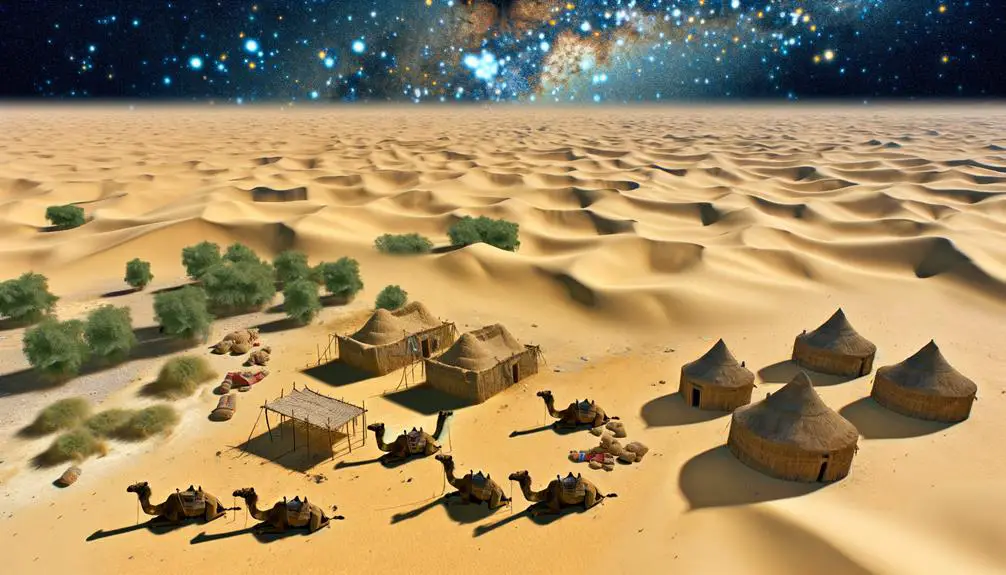
Mentioned frequently throughout biblical texts, the Land of Kedar was a significant region inhabited by the nomadic descendants of Ishmael, characterized by its vast deserts and strategic trade routes. This arid and austere landscape presented unique challenges and opportunities for its inhabitants, shaping Kedar's economy and geographical features into essential aspects of its identity.
Analyzing Kedar's economy, you'd find it deeply intertwined with its geographical features. The vast deserts weren't barren wastelands but were punctuated with oases that became hubs of trade and agriculture. These spots of fertility amidst the harsh desert were crucial for sustaining not only the local population but also for supporting trade routes that traversed the region. The strategic position of Kedar, lying at the crossroads of ancient trade routes, meant that it was a vital conduit for goods moving between the great civilizations of the ancient Near East.
Here's a visual representation of the ideas:
- Vast Deserts: Dominant geographical feature that shaped the lifestyle and mobility of Kedar's inhabitants.
- Strategic Trade Routes: Enhanced Kedar's economy, making it a significant player in regional trade networks.
- Oases: Essential for agriculture and trade, serving as vital points in the desert for sustenance and commerce.
- Crossroads of Civilizations: Positioned Kedar as a vital link between various ancient cultures, facilitating the exchange of goods and ideas.
In this analysis, you've seen how the geographical features of the Land of Kedar didn't just dictate the physical landscape but also sculpted the economic and cultural contours of this notable biblical region.
Kedar's Descendants

Having explored the geographical and economic foundations of the Land of Kedar, let's now focus on its people, particularly the descendants of Kedar, who played a crucial role in the region's historical and cultural narrative. These descendants, primarily known as the Kedarites, were integral to the tapestry of desert tribes that roamed the Near East, showcasing a nomadic lifestyle deeply rooted in the harsh desert environment.
The Kedarites, as progeny of Kedar, son of Ishmael, inherited a nomadic tradition that emphasized resilience, mobility, and a profound connection to the desert. This lifestyle was not merely a choice but a necessity, dictated by the arid landscapes they called home. Their survival hinged on their ability to traverse vast desert expanses, herding livestock, and engaging in trade with neighboring communities.
Aspect |
Description |
|---|---|
Identity |
Descendants of Kedar, son of Ishmael. |
Lifestyle |
Nomadic, with a strong emphasis on herding and trade. |
Environment |
Harsh desert landscapes of the Near East. |
Legacy |
Influential in shaping the cultural narrative of the region, particularly in terms of nomadic practices. |
Analyzing the descendants of Kedar offers insight into the broader context of desert tribes in the ancient Near East. Their nomadic lifestyle, shaped by the demands of their environment, fostered a culture of adaptability and resilience. This, in turn, influenced the social, economic, and cultural dynamics of the region, underscoring the Kedarites' significance in the historical and cultural narrative of the Land of Kedar.
Kedar and the Prophets

Throughout the biblical narrative, Kedar often emerges as a focal point in the prophecies of several prophets, highlighting its significant role and influence in the spiritual landscape of the Near East. This prominence isn't accidental; it stems from Kedar's unique position in both the economic and cultural spheres of the time. As you delve deeper into the texts, you'll notice that Kedar's economy and nomadic lifestyle are recurrent themes, intricately linked with its identity and the prophetic messages directed towards it.
Kedar, known for its robust economy, thrived on trade. Its nomadic lifestyle didn't hinder economic development; rather, it facilitated interactions with diverse cultures and economies. This economic prowess is often highlighted by the prophets, not merely as a matter of wealth but as a testament to Kedar's significance in regional geopolitics and its interconnectedness with the broader Near Eastern world.
- Kedar's Economy: The backbone, characterized by trade and livestock, underlining its affluence and influence.
- Nomadic Lifestyle: A defining trait, fostering resilience and adaptability, contributing to its economic success.
- Prophetic Attention: Kedar's prominence drew significant prophetic focus, reflecting its role in the divine narrative.
- Cultural Interactions: Enabled by its economy and mobility, leading to a complex, multifaceted identity.
Analyzing the prophets' messages to Kedar, it's clear they underscored the societal and spiritual responsibilities accompanying economic prosperity and cultural prominence. These prophecies serve as a mirror, reflecting the broader themes of accountability, morality, and divine justice that permeate the biblical text.
Archaeological Insights
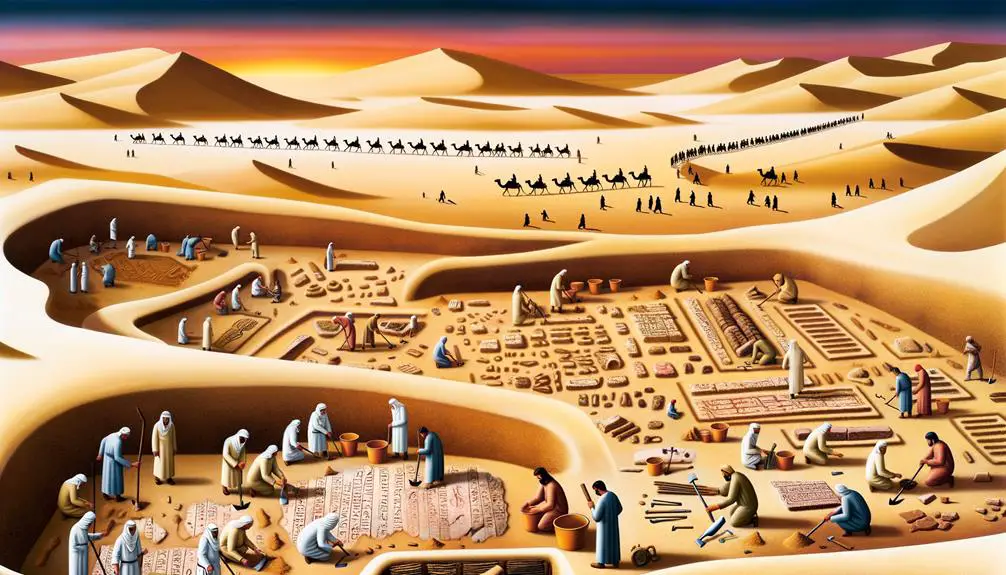
Archaeological discoveries have shed new light on Kedar, providing tangible evidence that enriches our understanding of its historical and cultural significance in the ancient Near East. As you delve into the layers of time, you'll find that Kedar's artifacts, unearthed through meticulous excavations, offer a glimpse into the daily life, trade, and spiritual practices of this once-thriving community. These artifacts, ranging from inscriptions and pottery to tools and jewelry, serve as silent witnesses to the sophistication and interconnectedness of Kedar with neighboring cultures.
However, unearthing Kedar's past isn't without its excavation challenges. The harsh desert environment, where sand and wind relentlessly work to erase the marks of ancient civilizations, poses significant obstacles. The preservation of organic materials is exceptionally rare, making every scrap of fabric or piece of wood a precious window into the past. Additionally, the political instability in regions where Kedar once stood often hampers archaeological efforts, limiting access to potential excavation sites and sometimes putting researchers at risk.
Despite these challenges, the determination and ingenuity of archaeologists have led to breakthroughs in our understanding of Kedar. Techniques like remote sensing and satellite imagery offer new ways to locate and map potential sites, while careful analysis of artifacts provides insights into the trade networks, social hierarchy, and religious beliefs of the Kedarites. Each discovery adds another layer to the rich tapestry of the ancient Near East, painting a more nuanced picture of Kedar's role in the region's history.
Kedar's Legacy
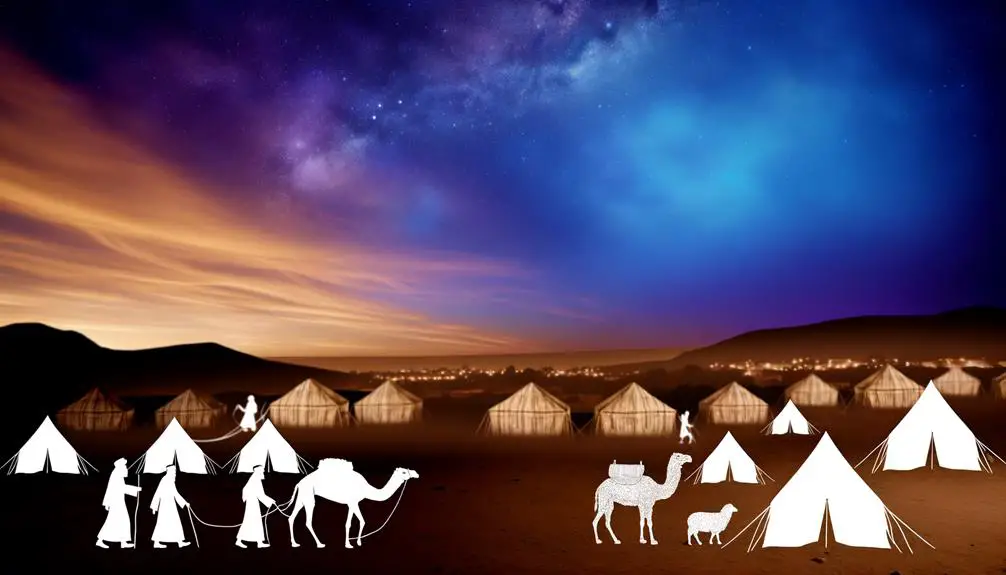
Kedar's enduring influence is evident in the myriad ways it shaped the cultural and trade landscapes of the ancient Near East. As you delve deeper into Kedar's legacy, it's crucial to understand how its economy and cultural practices left an indelible mark on history. Kedar's economy, thriving on trade and livestock, became the backbone of its wealth and influence, facilitating interactions with neighboring civilizations. These economic pursuits not only bolstered Kedar's status but also facilitated the exchange of cultural practices, enriching the tapestry of the ancient Near East.
Consider the following aspects of Kedar's legacy:
- Kedar's economy: Predominantly based on nomadic pastoralism, it was pivotal in establishing trade routes that connected various cultures, promoting the exchange of goods, ideas, and technologies.
- Cultural practices: Kedar's social and religious rituals contributed to the cultural diversity of the region, influencing neighboring societies and leaving a lasting legacy in the collective memory.
- Literary contributions: References to Kedar in biblical and extrabiblical texts highlight its significance and enduring presence in ancient literary traditions, providing valuable insights into its culture and economy.
- Archaeological findings: Artifacts and inscriptions related to Kedar offer tangible evidence of its economic activities and cultural practices, further elucidating its role in shaping the ancient Near East.
Frequently Asked Questions
How Has the Understanding and Interpretation of Kedar's Role in the Bible Evolved Over Time Among Different Christian Denominations?
As you explore how interpretations of Kedar's role have shifted, you'll find denominational debates at the heart. Initially, you might see Kedar's geography as a mere backdrop.
Yet, over time, various Christian denominations have dug deeper, analyzing its significance in prophetic and historical contexts. This scholarly journey reveals a rich tapestry of thought, where Kedar's place in scripture isn't static but evolves with theological insights and historical understanding across different Christian perspectives.
What Are the Primary Symbolic Representations of Kedar in Religious Art and Literature Throughout History?
Venturing into the realm of symbolism, you'll find desert imagery and nomadic symbolism at the heart of many artistic and literary interpretations. These elements serve as powerful metaphors for isolation, resilience, and the transient nature of life.
Analyzing these representations, it's evident that they encapsulate a deeper meaning, reflecting on the human condition and spiritual journey. Thus, they're not just aesthetic choices but are imbued with profound philosophical and theological significance.
Can the Name Kedar Be Found in Contemporary Religious Practices or Ceremonies, and if So, in What Context?
You'll find Kedar's name in contemporary religious practices, especially through Kedar-themed festivals and cultural adaptations. These events showcase Kedar's lasting impact, blending ancient traditions with modern spirituality.
They're not just about historical reflection; they embody the ongoing relevance of Kedar in today's religious landscape. By participating, you're engaging with a tradition that's evolved, yet remains deeply rooted in its original significance, demonstrating how cultural and religious practices adapt and persist over time.
How Have Modern Geopolitical Events in the Middle East Influenced the Scholarly Discourse on Kedar's Historical and Biblical Significance?
Imagine you're piecing together a puzzle where each piece represents a fragment of our past.
In your quest, you've noticed that recent geopolitical events in the Middle East have acted like a magnifying glass, bringing into sharper focus the role of archaeological findings and diplomatic relations in understanding Kedar's significance.
These developments have enriched scholarly debates, offering new insights and challenging previous assumptions about Kedar's place in history and its biblical context.
Are There Any Notable Figures in History or Modern Times Who Claim Descent From Kedar, Outside the Traditional Biblical Genealogy?
You're exploring if there are notable figures who assert their lineage from Kedar outside traditional biblical genealogy.
Genealogical claims like these often intertwine with cultural identity, shaping personal and communal narratives.
It's intriguing to see how individuals use these connections to anchor their heritage in historical contexts.
While direct, verifiable links may be scarce, the impact of such claims on cultural identity and historical discourse can't be understated, offering rich analytical depth.
Conclusion
In summing up, isn't it fascinating how Kedar, a figure from the Bible, offers such a rich tapestry for exploration? You've seen his lineage traced back to Genesis, witnessed prophecies unfold, and journeyed through the lands associated with him.
Kedar's descendants and their interactions with prophets provide a deeper understanding of his significance. Archaeological insights further enrich our comprehension, solidifying Kedar's legacy. This exploration not only illuminates the past but also encourages a nuanced appreciation of biblical narratives.


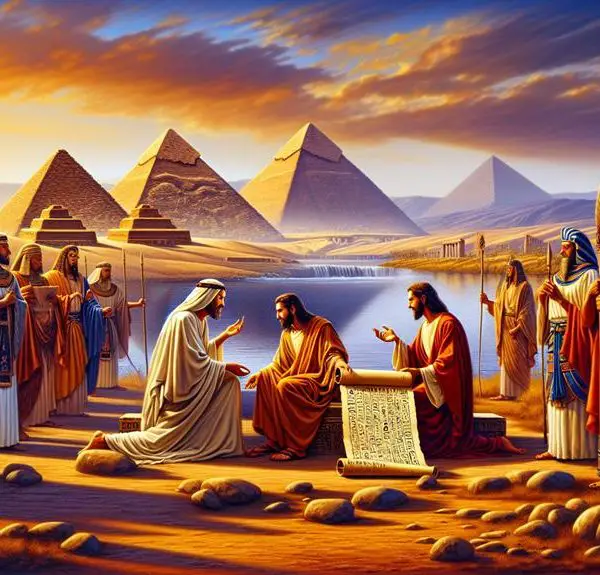
Sign up